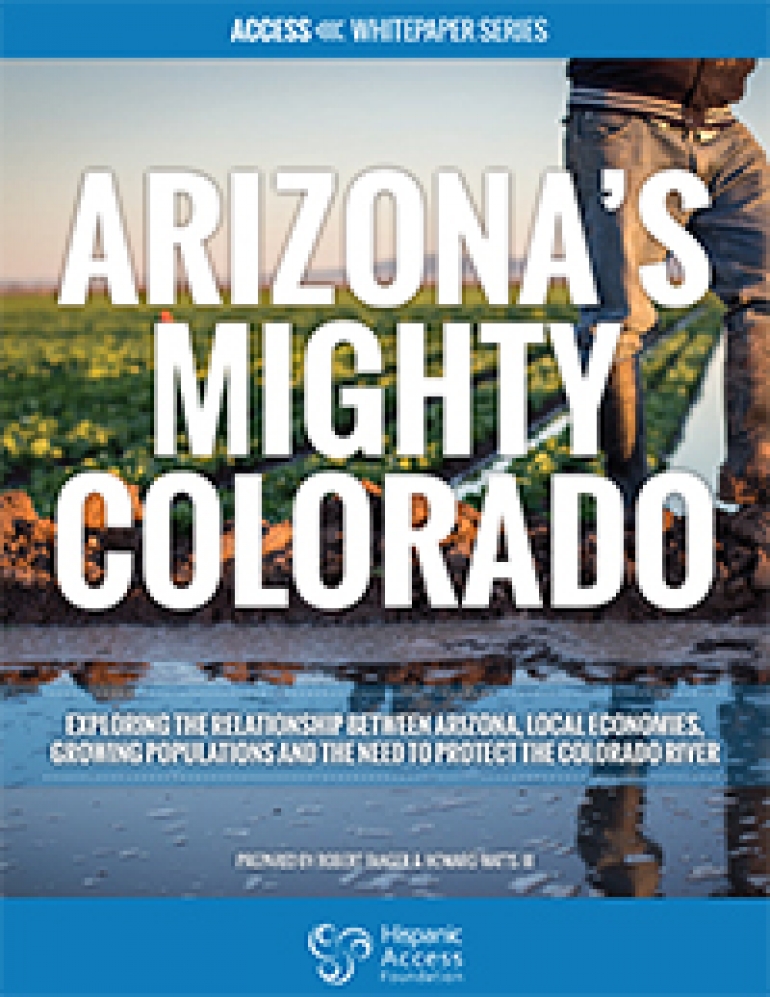This report provides a general overview of Arizona’s water challenges and underscores the importance and need for the Latino community, which has demonstrated a willingness to lead, to be actively involved in the conversation and efforts to protect the Colorado River. A summary of findings includes:
- A River Under Stress: Arizona has been in drought for more than 15 years, and Lake Mead continues to steadily decline as use exceeds supply. Rising temperatures and low snowpack upriver threatens to make this worse.
- Water Fuels Arizona’s Economy: Tucson and Phoenix make up more than three-quarters of the state’s economy, and depend on the Colorado River for a large portion of their water supply. So does the Grand Canyon State’s top export – tourism – and agriculture.
- Population Shifts: Arizona’s population has doubled since 1987 and is growing faster than the rest of the country, which could strain water resources in the future. Latinos are growing as a share of the state’s population, and by just 2030 a majority of residents will be non-white.
- Latinos Ready to Lead: Public opinion polling finds a majority Arizonans see the water supply as an important issue, and Latinos are more concerned than the average voter about drought and climate change. There are numerous examples of Latinos as environmental stewards.
While progress has been made on protecting the Colorado River, work remains:
- The Drought Contingency Plan: A conservation agreement between Arizona, California, and Nevada would reduce each state’s river use in order to protect Lake Mead. Mexico would also cut back, preventing catastrophic shortages.
- Conservation and Desalination: Arizona needs to continue to partner with its neighboring states and the federal government to invest in technologies and programs that reduce water use, and further study additional water sources to ease the burden on the Colorado River.
- Community Outreach & Education: To meet these challenges in the face of demographic change, Arizona’s Latinos can’t be left behind. Dedicated outreach and inclusion at all levels is critical.
In arid Arizona, water is life. It is critical to engage the growing Latino population to ensure this precious resource is available for the benefit of future generations.
